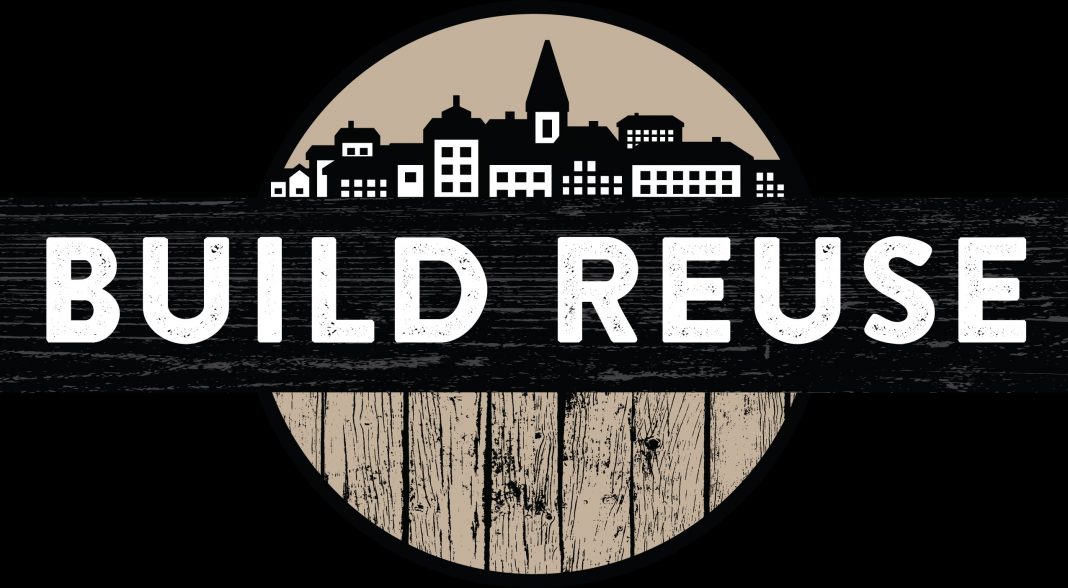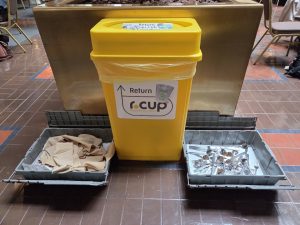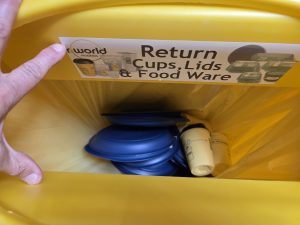Learn the latest cutting-edge strategies for workplace sustainability as WDM’s Cynthia Milota breaks down the key takeaways from Build Reuse, North America’s premier conference on deconstruction, salvage, and material reuse.
Build Reuse is the only North American conference focused explicitly on reuse in the built environment. Almost 300 professionals from around the world converged to discuss the current economic, social and environmental impacts of the building material reuse industry. The following article highlights key moments and ideas.
Over the next 40 years, our total building stock is estimated to double, while nearly a third of our present building stock will come down.
– Build Reuse, 2025
The Perfect Venue
The historic Landmark Center, a revered adaptive reuse project in downtown St. Paul, MN hosted the event. Completed in 1902, the building originally served as a US Post Office, Courthouse and Custom House for the state. A fitting place to host this conference, the Landmark itself was saved from demolition in the 1970’s, renovated and reopened as a hub for the arts in 1978.
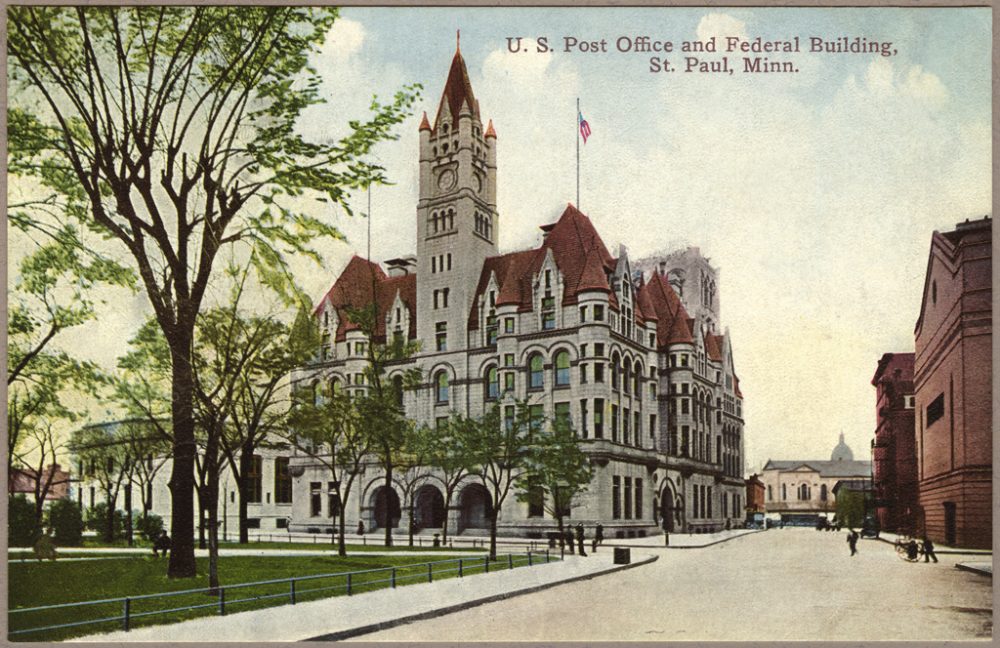
Meet the Hosts
The conference organizer, Build Reuse is a 501(c)3 non-profit established in 1994. Encouraging the recovery, reuse and recycling of building materials, the organization is also committed to social investment and workforce development in the deconstruction industry. Build Reuse’s EPA grant to track emissions savings of salvaged items was terminated earlier this year. While progress will be slowed with the funding loss, the organization will continue to support a national registry of deconstruction trainers, a robust Build Reuse Forum, a newsletter, workgroups/committees, Build Reuse Affinity Groups (BRAG’s) and various best practices including information on tax deduction for donations of used building materials to nonprofits.
Our vision is to transform our communities by creating a building industry in which used and excess materials become an asset and waste is no longer acceptable.
– Build Reuse, 2025
Build Reuse partnered with r.world reusables to dramatically reduce single-use waste by providing reusable dinner/silver ware, hot and cold reusable cups and cloth napkins. The r.world reusable food ware and returnable process are pictured here.

Do the most good with the least effort.
– r.world reuse
Bridging the Gap
This year’s conference theme “Bridging the Reuse Gap from Promise to Practice” explored how bold ideas are transformed into real world solutions across architecture, (de)construction and policy. The current political climate requires a different level of commitment, but many markets are showing increased demand for salvaged materials, in commercial as well as in the better-established residential arena. The industry is coalescing around C&D waste.
Defining the Term: C&D Waste (Construction and Demolition)
C&D waste are materials generated in the construction, renovation, and demolition of buildings, (EPA, n.d.). Annual C&D Waste is projected by the World Bank to be 2.2 billion tons in 2025, (Ding, et al, 2023).
 In her keynote, Kira Gould, co-host of Design the Future Podcast, discussed the reckoning with building materials, their stories about history, labor and the environment. While money is the plainest story to use as the baseline, she suggested that the industry stop leading with guilt and change the narrative to possibility. It can be more about the value and less about the cost. There’s a cultural shift brewing in the reuse economy, in how we communicate the value of material reuse.
In her keynote, Kira Gould, co-host of Design the Future Podcast, discussed the reckoning with building materials, their stories about history, labor and the environment. While money is the plainest story to use as the baseline, she suggested that the industry stop leading with guilt and change the narrative to possibility. It can be more about the value and less about the cost. There’s a cultural shift brewing in the reuse economy, in how we communicate the value of material reuse.
When we reuse materials, we are not just preserving embodied carbon — we’re preserving embodied memory. Reuse tells stories. It honors the work of past generations.
– Gould, 2025
Defining the Term: Embodied Carbon
Embodied carbon refers to the CO₂ emissions associated with the materials, production, transportation and construction of a building before it becomes operational.
Defining the Term: Embodied Memory
Embodied memory in the built environment is the idea that reuse of buildings or materials tells stories of place, stories of people or craftsmanship and stories about culture, (Gould, 2025).
 Carl Elefante, famous for his 2007 quote, “the greenest building is one that is already built,” was the second keynote speaker. He spoke to themes from his new book, Going for Zero: Decarbonizing the Built Environment on the Path to our Urban Future: climate, justice and urban imperatives. Elefante’s viewpoint is informed by his career of rescuing buildings from senseless demolition and learning from the practices and wisdom embedded in the built heritage, (Island Press, n.d.).
Carl Elefante, famous for his 2007 quote, “the greenest building is one that is already built,” was the second keynote speaker. He spoke to themes from his new book, Going for Zero: Decarbonizing the Built Environment on the Path to our Urban Future: climate, justice and urban imperatives. Elefante’s viewpoint is informed by his career of rescuing buildings from senseless demolition and learning from the practices and wisdom embedded in the built heritage, (Island Press, n.d.).
If the past teaches, what does the future learn?
– Elefante, 2025
Infrastructure for Diversion
Whether to deconstruct a space or building and salvage materials can come down to two questions:
- Is there a legislative mandate?
- Does it make financial sense?
Portland became the first city in 2016 to pass an ordinance requiring the deconstruction of single-family homes built before 1940 slated for removal, rather than allowing conventional demolition. Since then, a dozen other US cities have enacted similar statutes.
Defining the Term: Deconstruction
Deconstruction is the selective dismantling of building components for reuse or repurposing and secondarily for recycling. This construction-in-reverse process takes a higher degree of skilled labor and a longer timeframe but offers potential income streams from the sale of and tax benefits from donations of salvaged materials.
Defining the Term: Demolition
A building or interior is cleared by the most expedient means available, related to time and cost. Demolished materials are hauled to landfills.
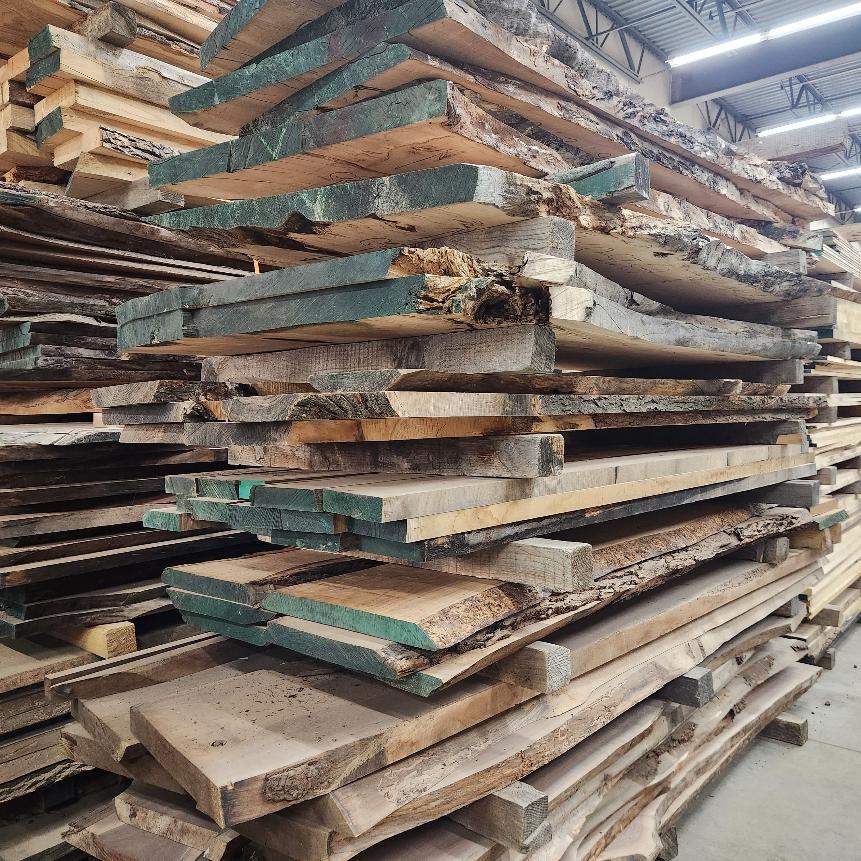
Many of the skilled building trades are being lost in a couple generations.
– Langowski, 2025
Projects exploring deconstruction often start with a deconstruction survey or materials audit to determine potential salvageable products. While Digital Product Passports are still emerging, in the future they will greatly enhance the deconstruction process.
Defining the Term: Digital Product Passport (DPP)
A digital tool for collecting and providing product data including material content, performance, environmental impact, transportation, storage, installation, maintenance, repair and end-of-use data for use by producers, consumers, regulatory bodies and the resale market.
The team presenting “Digital Transformation in Deconstruction,” Kinley Deller, Felix Heisel, Ming Qu and Hongxi Yin described a framework for a cost/effort/value analysis using the adaptis AI powered building lifecycle management platform.
“High value – high yield materials such as full-dimension softwood, exposed steel, aluminum are easy to extract, have a high resale value, and experience minimal contamination
Takeaway – high payback in cost and circularity
Medium value – context dependent materials are often trickier due to their bulk or labor-intensive processes to remove, with resale value variable
Takeaway – only recover when local reuse or recycling infrastructure exists and local tipping fees are high
Low value – high effort materials such as insulation, shingles, composite finishes require high labor costs to remove and are often damaged or contaminated, offering a lower resale value
Takeaway – landfill or energy recovery may be the most cost effective unless there is diversion policy in place,” (Adaptis, 2025).
Promoting deconstruction in new construction fabrication techniques will simplify future deconstruction and enhance the practice of urban mining for building materials.
Defining the Term: Urban Mining
One form of urban mining involves recovering and reusing materials from demolished, deconstructed or renovated buildings, turning these existing structures into resource banks.
The workshop “Building a Regional Material Reuse Strategy to Drive Commercial Reuse,” facilitated by Frances Yang and Andrew Ellsworth explored:
- Why commercial building material reuse hasn’t taken off.
- How the commercial reuse economy can be built from the ground up by:
- Identifying what reclaimed materials customers will buy,
- Building the right businesses to support the demand,
- Supporting public and private sector collaboration.
The existing reuse infrastructure is not built for the needs of commercial projects, as the market is currently non-existent. However, there is great potential in the commercial reuse market.
“We are incorporating salvaged materials in many ground-up new construction projects and standardizing the integration of building material reuse into Bay Area tenant improvement projects.”
– Google, 2025
“We are challenging each trade to identify a minimum of one reuse option (identify any cost/schedule implications) and develop a reuse procurement action plan in the process.”
– JLL, 2025
“Our Design & Construction teams will discuss ways to prioritize procurement of recycled content or reused materials, reduce surplus and deconstruct instead of demo.”
– Genentech, 2025
The IBC (International Building Code) generally allows the reuse of salvaged materials in new construction, provided they meet the same requirements as new materials, this includes compliance with structural and fire-resistance standards. Local building officials may need to approve the reuse of used equipment and some components.
Establishing methods for grading and including salvaged lumber in the IBC 2027 are especially important, as reusable lumber accounts for 16% of C & D materials shipped to landfills.
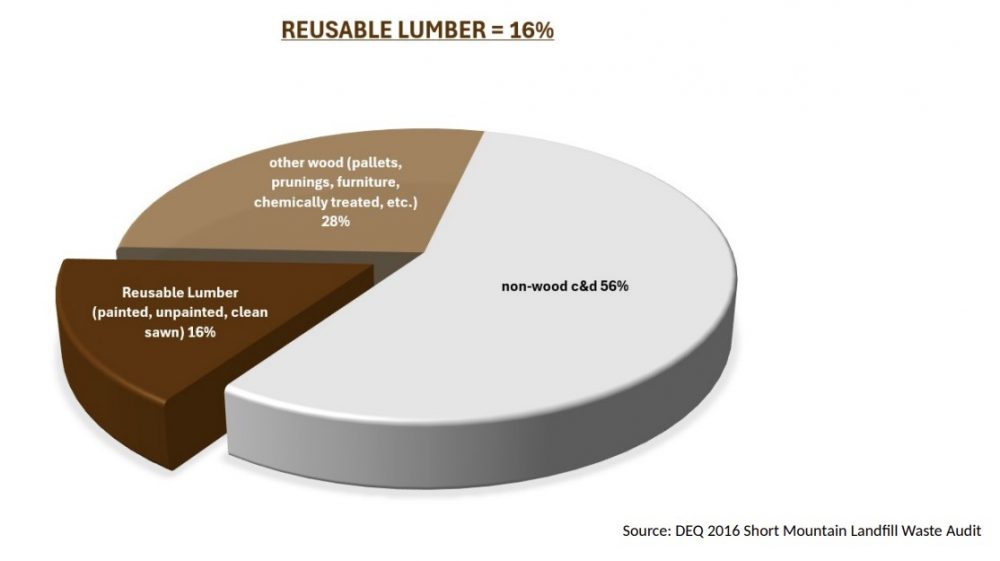
Reuse Stigma
The negative stigma of reusing building materials was implicitly referenced in some conference conversations. Concerns about quality, code compliance, health hazards, structural integrity, being outdated, less desirable and complicating schedules could be voiced by various stakeholders in the built environment process. “A major obstacle to the wide implementation of C&D waste products is not technical requirements and structural strength but the negative stereotype of the recycled products,” (Ding, et al, 2023).
“The most effective method of waste management is not to improve technology but to change people’s attitude.” – Ding, et al, 2023
Defining the Term: Reuse Stigma
The negative stigma of reusing building materials stems from perceived, unsubstantiated quality and reliability issues.
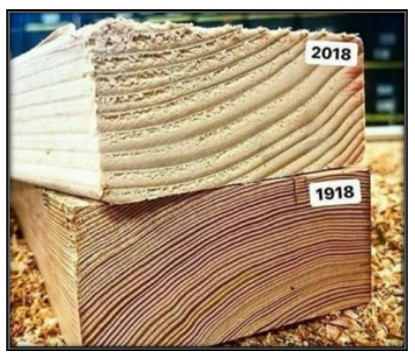
Older trees had to compete more for sunlight, water and nutrients which made them grow slower and more resistant to insect damage.
– Cika, 2025
Stories from the Job Site
In “Pilot Programs Boosting the Circular Building Materials Economy in the Pacific NW” speakers Lauren Zimmermann Onstad and Katie Kennedy discussed the well-established Portland and Seattle deconstruction ordinances. They include incentive programs for expedited electrical disconnects, ability to build increased floor area or more height and cash rebates: $4000/house, $500/garage, $6000/commercial building.
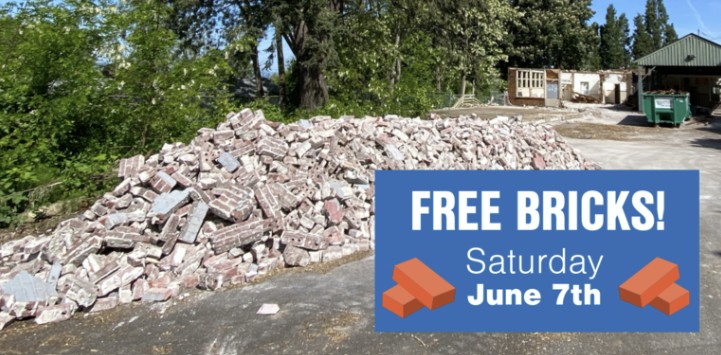
For larger projects, community work includes tours, signage, website information and special events like a “free brick day.” Deconstruction is working in these markets. They have the math to prove their success: a deconstructed 1260 SF house yields 3400 board feet of lumber and diverts 4.37 tons from the landfill. Importantly, a Salvage and Reuse Assessment is often integrated into the original scope of work.
Conference presentations outlined many deconstruction and reuse success stories from around the country. Here are a few additional examples:
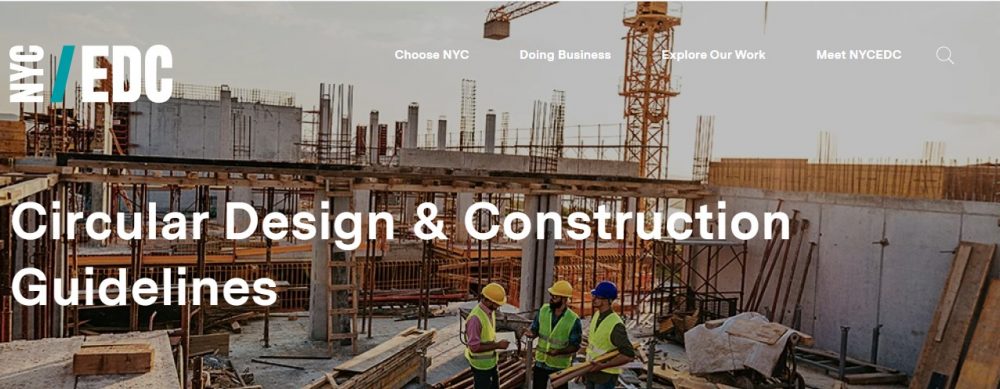
Tackling the Puzzle of Commercial Reuse in New York City – Luke Lombardi, Shefali Sanghvi, Dave Bennink, Jimmy Mitchell
NYC Economic Development Corp: Circular Design & Construction Guidelines
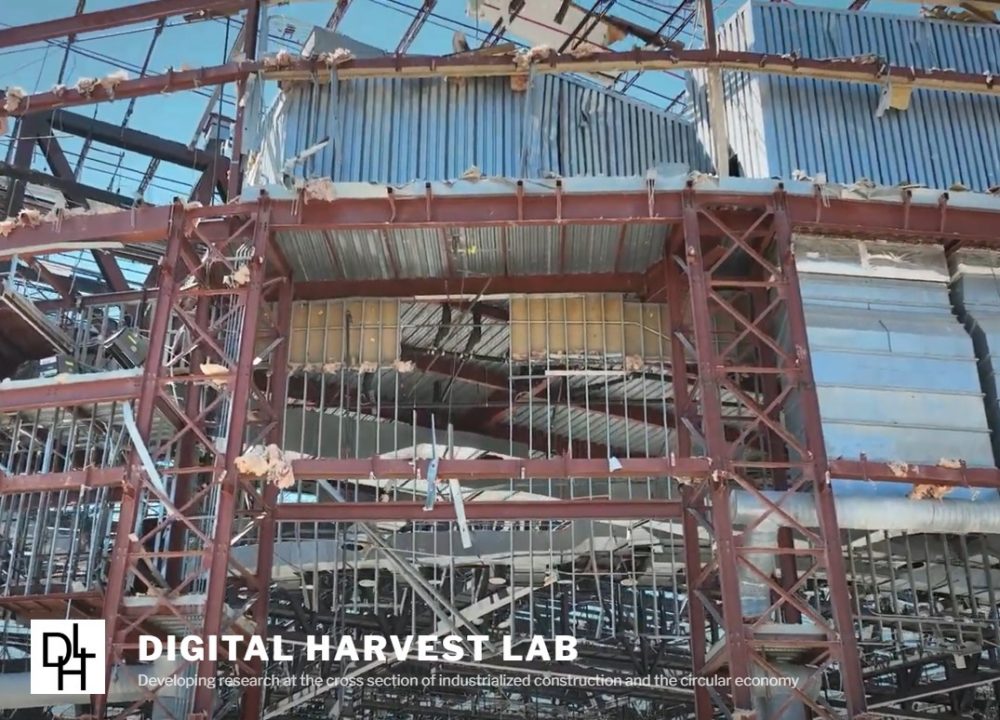
Large-scale Institutional Building Deconstruction at University of Texas, Austin – Chris Rausch, Seungah Suh
Digital Harvest Lab: developing digital innovations to harvest new opportunities for how the built environment is constructed and managed.

Nice Save! Adaptive Reuse and Sustainable Design, the Minnesota Way – Allie Lloyd, Amanda Barke, Alex Haecker, John Greene, Charley Langowski.
Consider not what a building component is now, but what it can become.
– Lloyd, 2025
Interiors: Flip the Script
Interior spaces are responsible for a consequential amount of embodied carbon. The interior design process is also responsible for specifying significantly more materials than the structure or envelope of a building. The team presenting “Circularity in Interior Design: Mechanism and Mindset,” David Bergman, Anne Gibson, Douglas Pilgrim, Jesce Walz offered this framework.
The interiors mindset must shift to a more wholistic perspective:
- Make circularity a “before-thought” by transforming the expectations of materials,
- Transform attitudes towards materials from something temporary to an asset that can be harvested later,
- Overcome the stigma of “used” – shift to performance quality standard specs and remove the word “new,”
- Evolve design styles – making spaces less precious, embracing new aesthetics by connecting to story,
- Drive the cost + added value case,
- Acknowledge that the designer’s responsibility doesn’t end after the client moves in.
In “Transforming Buildings into Material Resources,” Marcus Hopper outlined these goals for teams embarking on circular economy and reuse projects: 1) embed reuse in your standard design process; 2) expand reuse service offerings; 3) explore new partnership opportunities. The client’s leadership team will be essential to set the baseline measure of project success.
Material recovery through deconstruction is an unparalleled opportunity for reducing embodied carbon, while also diverting construction waste, reducing exposure to toxic pollutants, protecting natural resources and creating green jobs.
– Hopper, 2025
Additional Resources
Circular Design Primer for Interiors / Perkins&Will
Building Materials Reuse Analysis / Gensler/San Francisco Environment Department/StopWaste.org /The ReUse People/Madrone
Policy Tracker / All for Reuse
References
Adaptis, (2025). Confidential project research study. Contact Mark Collins for further information.
Build Reuse, (2025). “Decon + Reuse ’25,” Retrieved from: https://www.buildreuse.org/conference
Cika, G. (August 2025), personal communication.
Ding, Z., Zhang, Z., Chen, W., Chen, J. (January 2023). “Investigating the implicit stereotypes of recycled construction and demolition waste products,” Retrieved from: https://www.sciencedirect.com/science/article/abs/pii/S0959652622048077
Elefante, C. (August 2025), personal communication.
EPA, (Environmental Protection Agency), (n.d). “Construction and Demolition Debris: Material-Specific Data,” Retrieved from: https://www.epa.gov/facts-and-figures-about-materials-waste-and-recycling/construction-and-demolition-debris-material#:~:text=Note:,Summary%20Table
Genentech, (2022), “2022 Bay area owner’s alliance,” Retrieved from: https://www.allforreuse.org/resources/case-studies
Google, (2022), “2022 Bay area owner’s alliance,” Retrieved from: https://www.allforreuse.org/resources/case-studies
Gould, K. (August 2025), personal communication.
Hopper, M. (August 2025), personal communication.
Island Press, (n.d.). “Going for Zero,” Retrieved from: https://islandpress.org/books/going-zero#desc
JLL, (2022), “2022 Bay area owner’s alliance,” Retrieved from: https://www.allforreuse.org/resources/case-studies
Langowksi, C. (August 2025), personal communication.
Lloyd, A. (August 2025), personal communication.
r.world reuse, (2025). Retrieved from: https://rworldreuse.com/.

